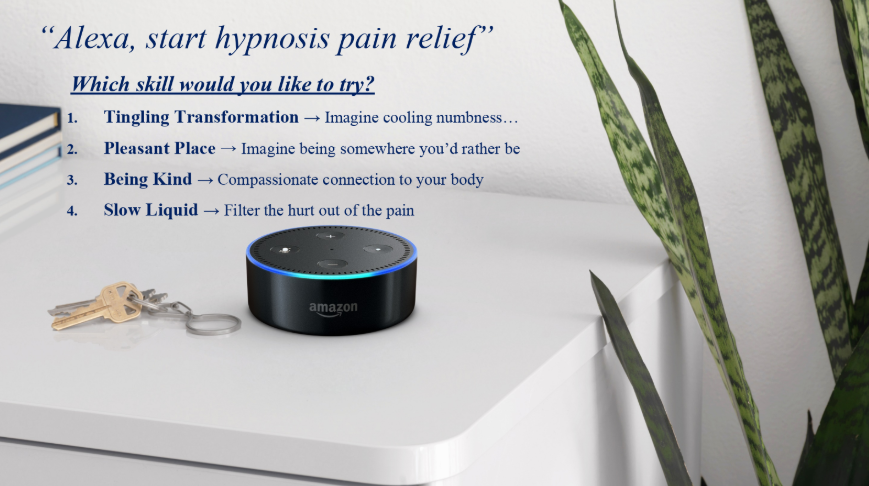BDSM therapy: Are there therapeutic and relational benefits to being submissive?

Credit: LIGHTFIELD STUDIOS / Adobe Stock
- BDSM is an acronym encompassing a variety of sexual practices that include: bondage/discipline, dominance/submission, and sadism/masochism. The practice of BDSM usually consists of partners taking on specific roles in which one partner is dominant and the other is submissive.
- BDSM practitioners (individuals who frequently engage in BDSM play) can experience various mental health benefits from engaging in their scenes.
- According to the research, subspace is often characterized by the activation of the sympathetic nervous system, the release of epinephrine and endorphins, and a subsequent period of non-verbal, deep relaxation.
The Psychology of Submission – Why Do Sub’s Submit In BDSM? The Fascinating Facts Revealed Here!www.youtube.com
Many experts have weighed in on the significant mental and physical health benefits of sex:
- Lower blood pressure
- Stronger immune system
- Better heart health
- Improved self-esteem
- Decreased symptoms of depression and anxiety
- Better sleep routines
However, there is an increasing interest in studies that explore the specific mental and physical health benefits of BDSM practices. BDSM practitioners (individuals who frequently engage in BDSM play) can experience various mental health benefits from engaging in their scenes. For example, one study suggests that being dominant in the bedroom can boost your work ethic. Other research in this area has suggested engaging in BDSM activities can boost your mental well-being and increase awareness of your attachment style in partnerships, which can ultimately lead to healthier relationships. Additionally, unhealthy stereotypes and misconceptions about BDSM have also been addressed by experts.
A natural starting point for more research surrounding the mental health impact of BDSM practices is to explore what happens in a person’s mind and body when they experience intense sexual activity. While physical reactions (such as arousal and climax) are quite typical, there is something unique that happens to individuals who participate in intense BDSM scenes.
What is “subspace” in BDSM play?
Subspace is defined as a state of transcendence reached by submissives through intense physical or psychological experiences with their partner. This can happen through sensory triggers (the use of paddles, blindfolds, restraints) or through emotional triggers (certain words or phrases, meaningful expressions).
This space, while experienced differently for many, can be described as a nearly-hypnotic feeling that takes over when the submissive partner is highly engaged in their role.
What is “domspace” in BDSM play?
Domspace is defined as an altered, elevated state of mind that Dominants (during BDSM scenes) experience through intense physical or psychological experiences with their submissive partner. This can happen through sensory triggers (using paddles or restraints on your partner) or through emotional triggers (expressing certain words or phrases to your partner, meaningful expressions, the notion that your submissive trusts you enough to be vulnerable with you).
While subspace can be described as a “hazy” or “blurry” trance-like state, domspace is often described (by individuals who experience it) as an intense, euphoric, and focused state of mind.

Experts weigh in: there may be therapeutic and relational benefits to being a submissive person in BDSM scenes.Photo by LIGHTFIELD STUDIOS on Adobe Stock
According to the author of the study, Dulcinea Pitagora: “Because the BDSM community has been historically vilified due to stereotypes reinforced by negative media exposure and inadequate education, relatively little is known about the phenomenon of subspace outside of the BDSM community.”
There is a proven connection between BDSM interactions and altered states of consciousness.
According to a 2016 study, there is a direct link between BDSM interactions and ASCs (altered states of consciousness) – the significant one, in this case, being that engaging in a submissive role during BDSM play can lead to transient hypofrontality.
Transient hypofrontality, a term coined by Dr. Arne Dietrich, is when the focused, thought-processing part of the brain is “shut off” by external triggers. An example of this is the difference between engaging in a competitive sport and running in a beautiful park. During a competitive sport, your brain will need to make a variety of complex decisions. While you’re running a calmer path in a beautiful park, however, your mind can “let go” of that prefrontal engagement and you can experience an alternate (relaxed) state of consciousness. For a submissive, during BDSM scenes, this can result in reduced self-reported stress and increased sexual arousal.
Transient hypofrontality has also been used to describe severe “end-stage” addictions. This ability to “shut off” the thought-processing function in your brain can actually cause “involuntary” cravings for this feeling. This can be why many submissive practitioners become reliant on their BDSM activities.
The study explains, “In order to examine an alignment of transient hypofrontality with subspace, the authors collected additional self-reported data describing experiences of subspace; a comparison of these datasets confirmed that the characteristics of transient hypofrontality were consistent with those of subspace.”
Experiencing subspace during BDSM play can activate the sympathetic nervous system.
According to the research, subspace is often characterized by the activation of the sympathetic nervous system, the release of epinephrine and endorphins, and a subsequent period of non-verbal, deep relaxation. This chain reaction can often lead the submissive in the scene to experience a temporary state of depersonalization and derealization (which are generally experienced as positive and pleasant in this context).
The key to experiencing this trance-like state is having a partner you trust, research suggests.
This state is highly sought after by individuals who identify as submissives in the BDSM context – and the key to achieving this state of being is having a dominant partner you can trust. This type of trust and reciprocal consent can provide an entry to subspace.
“Because the participant who identifies as the sadist, dominant [or top] in a given scene is generally charged with monitoring and protecting their partner, the [submissive] bottom in the scene might be better situated for achieving an altered state of consciousness and transcendence.” – Rethinking Kink, 2010
BDSM could be used as a way to heal from trauma and benefit your relationships, experts suggest.
While there is no research to date that has sought to capture the specific experiences of subspace and how they relate to relationships and healing, many experts believe BDSM can in fact provide therapeutic and relational benefits to those who engage in the practices.
“Given the associations between ASCs and subspace described above, the authors’ findings on ASCs can be extended to the analogous experience of subspace. The study suggested that symbolic action can have a profound effect on psychological processes and connected trance (a type of ASC) with the healing properties of the trance state.”





